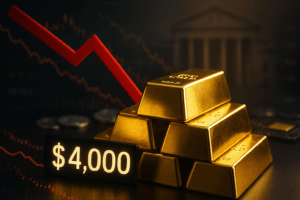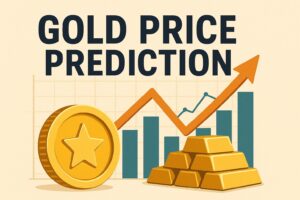Goldman Sachs analysts argue that gold acts more like Manhattan real estate than oil. The reason: gold isn’t consumed like other commodities; it’s accumulated and passed between owners. With nearly 220,000 metric tons still in existence and annual supply adding just 1%, prices are determined by buyers’ willingness to hold. Two groups dominate the market: conviction buyers (central banks, ETFs, speculators) who buy regardless of price, and opportunistic buyers (emerging market households) who step in only when prices drop. Similar to Manhattan housing, where a fixed supply means the “marginal buyer” sets the price, conviction buyers explain about 70% of monthly gold price movements. With gold already up 27% this year, Goldman sees prices climbing to $3,700 by late 2025 and $4,000 by mid-2026.

Gold Rebounds Above $4,000 as Fed Prepares Rate Cut
Gold rebounds above $4,000 and silver rallies 2.5% as the Fed prepares another rate cut. But warning signs are mounting: white-collar unemployment is surging, AI is reshaping the job market, and Nvidia races toward $5 trillion amid bubble fears. Here’s what precious metals investors need to know today.




